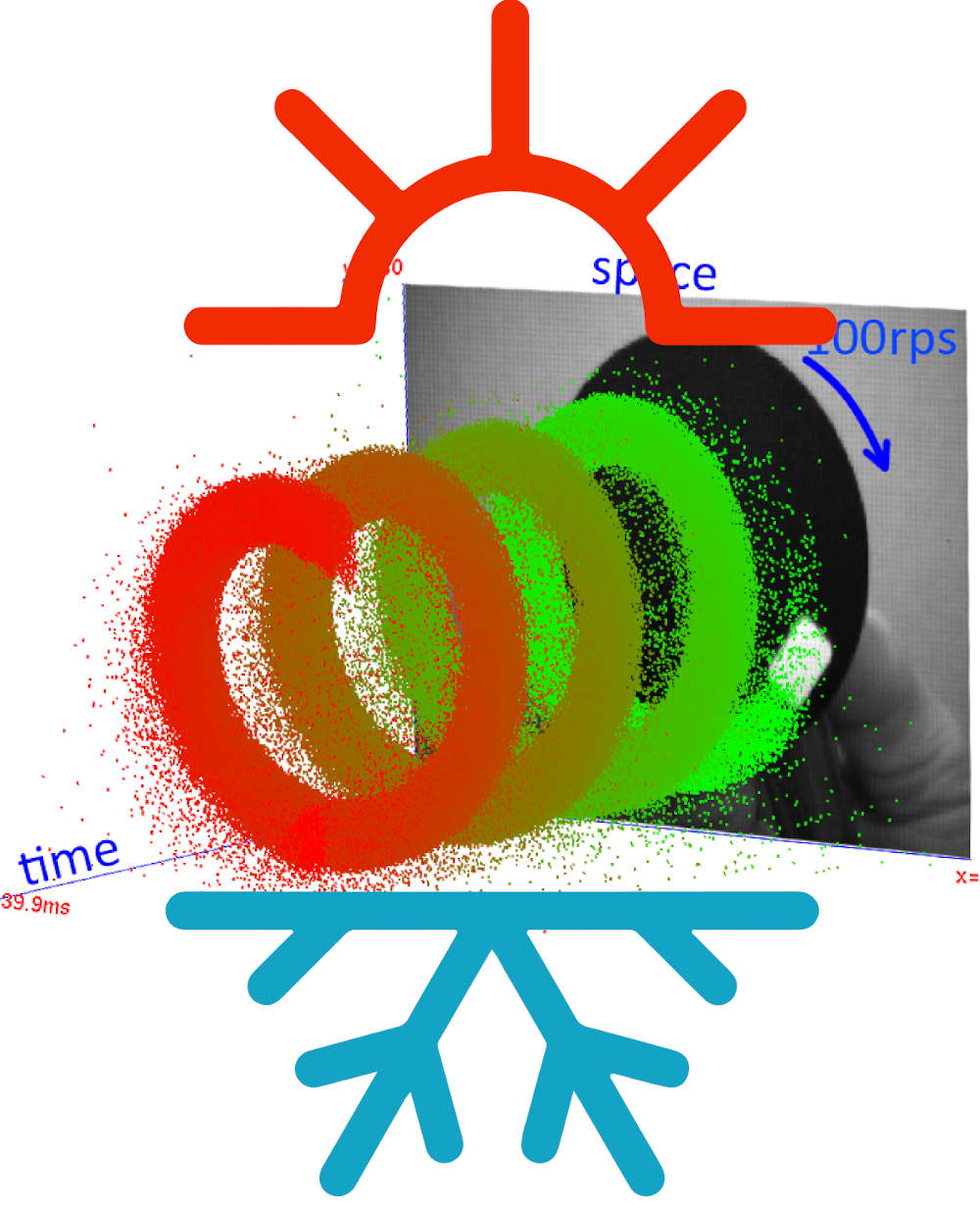Cooled DVS for 2D quantum trap atom detection - COOLDVS

Cool down a DAVIS frame-event camera to see its reduction of noise and capability to sense brightness changes under low lighting.
bachelors/semester/masters (depending on extent of proposal)
Description
The potential for DVS event cameras for improved low noise, low-light behavior with cooling has not been studied. In this project, you will first do basic SPICE simulations to understand the effect of low temperature on DVS operation. You will equip a DAVIS camera with a cooler (most likely Peltier) and measure the effect of cooling on the frame and event noise. How sensitive can you make DVS? How much can you reduce the noise under low light intensity?
If successful, this project greatly opens the possibility for using DVS for a particular scientific application of detecting atoms in a 2D quantum optical systems, and for other areas such as satellite tracking.
There is a possible collaboration possibility with the
Inst. of Quantum Electronics (Ilia Sergachev and Jonathan Home) in this project if it is successful.
Background material
- P. Lichtsteiner, C. Posch, and T. Delbruck, “A 128×128 120 dB 15μs latency asynchronous temporal contrast vision sensor,” IEEE J. Solid-State Circuits, vol. 43, no. 2, pp. 566–576, Feb. 2008, doi: 10.1109/jssc.2007.914337. [Online]. Available:
https://ieeexplore.ieee.org/abstract/document/4444573/
- Y. Nozaki and T. Delbruck, “Temperature and Parasitic Photocurrent Effects in Dynamic Vision Sensors,” IEEE Trans. Electron Devices, vol. 64, no. 8, pp. 3239–3245, Aug. 2017, doi: 10.1109/TED.2017.2717848. [Online]. Available:
https://dx.doi.org/10.1109/TED.2017.2717848
-
Event cameras - YouTube tutorial T Delbruck 2020
- 2D quantum traps:
https://www.youtube.com/watch?v=UT3ev9OgkmY
- 2D quantum tutorial trap readout:
https://www.youtube.com/watch?v=Wv-hoCenJx4
Link to latest version of ad
Requirements
- Circuit design background, sufficient for understanding the DVS pixel and ability to run SPICE simulations in Cadence.
- Hands-on electronics (basic) to find and equip prototyping DAVIS camera daughterboard thermoelectric cooler, e.g this Farnell Peltier. Multistage Peltiers may be good for higher temperature differences.
- Willingness to be creative and flexible in meeting experimental challenges (this is NOT a pure keyboard project :-)).
Contact
Tobi Delbruck (tobi@ini.uzh.ch), Rui Graca (rpgraca@ini.uzh.ch)